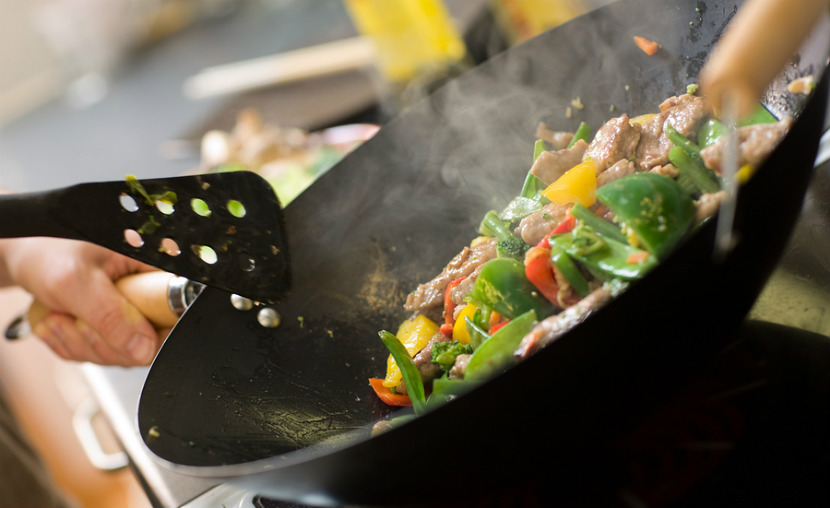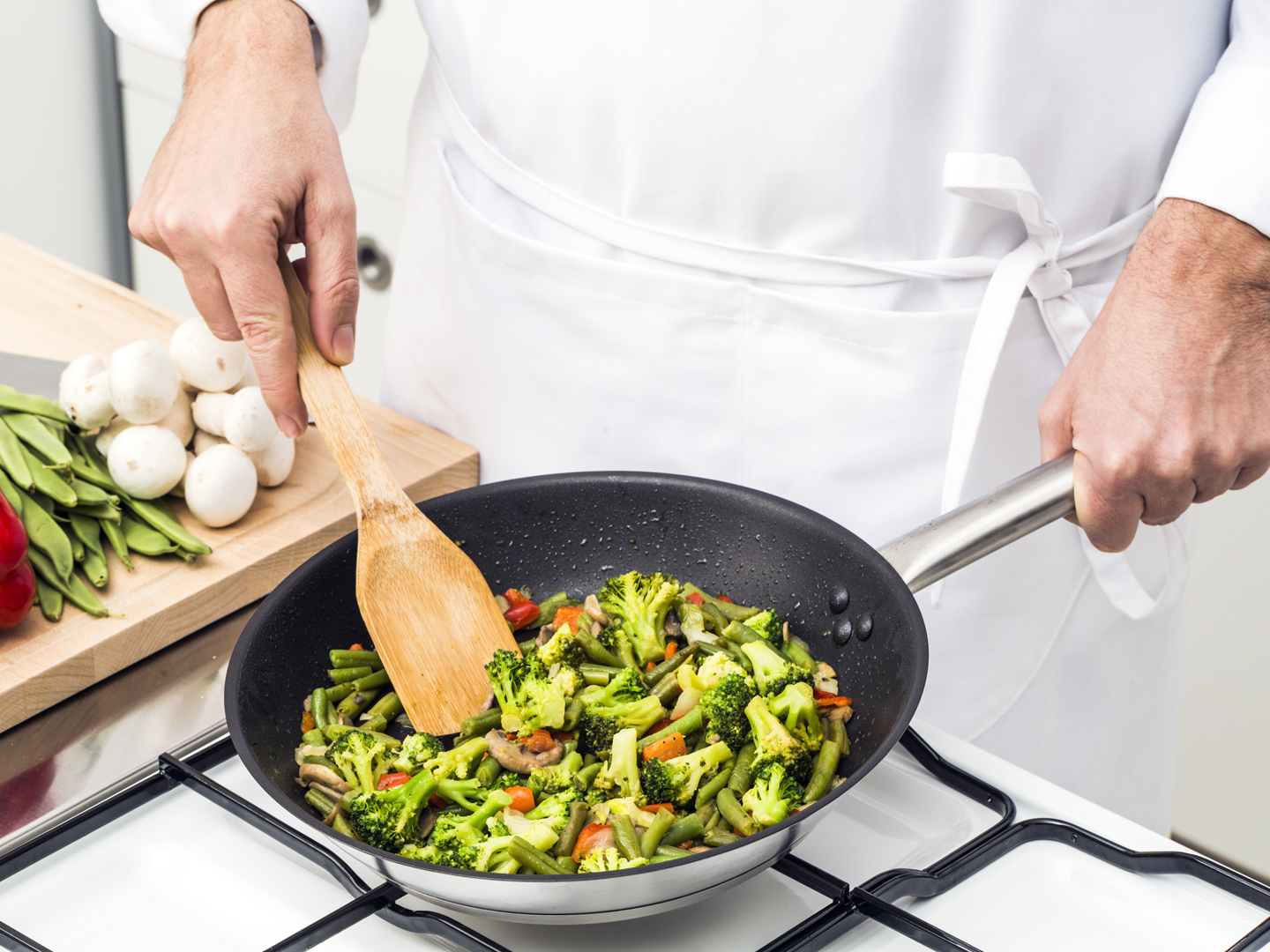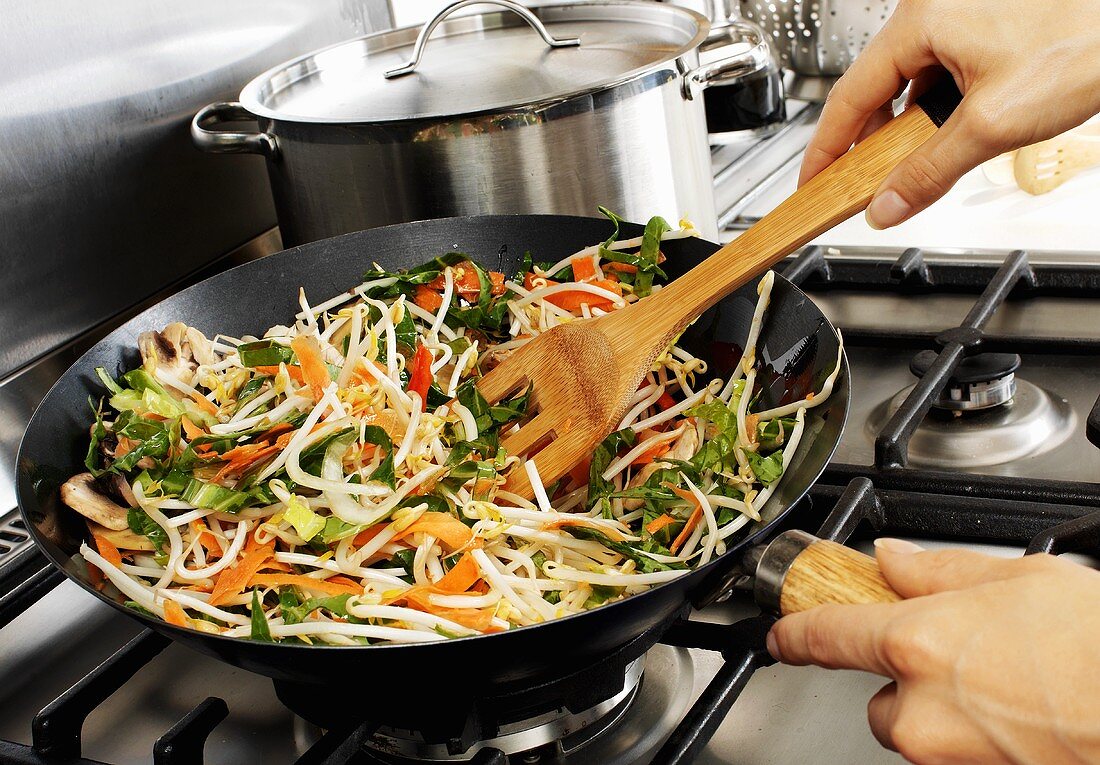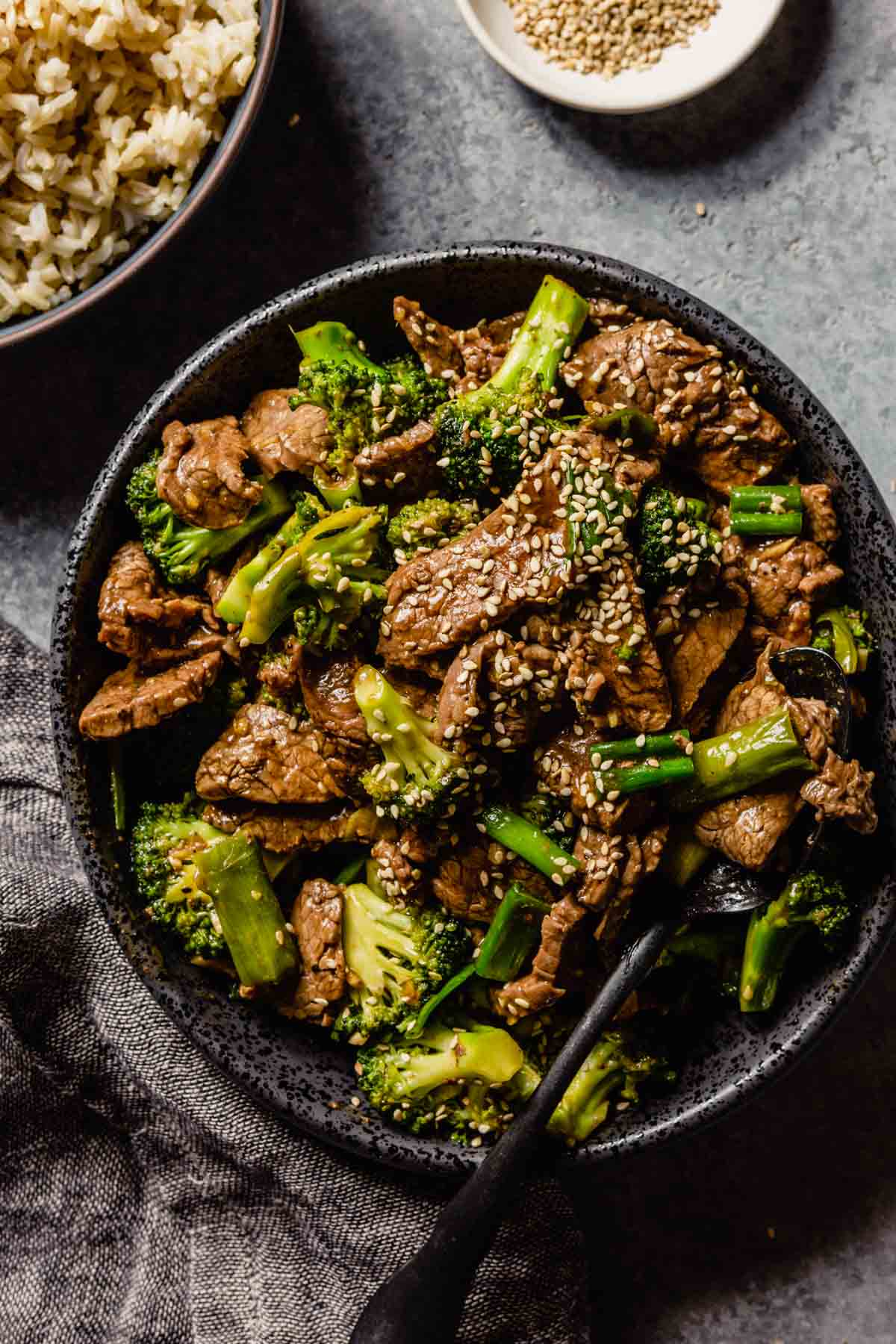Stir-frying is a beloved cooking method known for its quick preparation and vibrant flavors. While it may seem straightforward, achieving the perfect stir-fry requires attention to detail and a few insider tips. Whether you’re a novice or looking to refine your skills, this comprehensive guide will help you master the art of stir-fry.

Stir-frying originated in China and has become a staple in many cuisines worldwide. The essence of stir-frying lies in cooking food quickly at high temperatures, preserving the ingredients’ flavors, textures, and nutritional value. Here’s what you need to know to create a delicious stir-fry at home.
Essential Stir-Fry Tips

1. Preheat Your Wok
A critical step in making a great stir-fry is ensuring your wok is adequately preheated. This step is vital because a hot wok helps sear the ingredients quickly, preserving their natural juices and enhancing flavors. A properly heated wok prevents food from sticking and ensures that everything cooks evenly. For best results, use a carbon steel wok, as it can withstand high temperatures and heats up quickly. Heat your wok on high for 5 to 10 minutes until it starts to smoke lightly. If using a non-stick wok, avoid preheating it empty to prevent damaging the coating. This intense preheating is crucial as it mimics the powerful heat used in restaurant kitchens, which helps achieve that distinctive stir-fry flavor and texture.
2. Choose the Right Oil
The choice of oil significantly impacts the quality of your stir-fry. Oils with high smoke points are essential because stir-frying involves very high temperatures. Using oils that can withstand these temperatures without burning ensures that your food doesn’t acquire a bitter taste from burnt oil. The best oils for stir-frying include refined safflower oil, refined sunflower oil, peanut oil, and canola oil. These oils not only have high smoke points but also maintain a neutral flavor, allowing the natural taste of your ingredients and seasonings to shine through. Peanut oil is an excellent option if you prefer a subtle, nutty flavor that complements many Asian dishes.
3. Prepare Ingredients in Advance
Preparation is key in stir-frying because the actual cooking process happens quickly. Having all your ingredients prepped and ready before you start cooking ensures that you can add them at the right time without overcooking or burning any components. This method is known as “mise en place,” which means everything in its place. Cut your meat into thin, uniform strips against the grain to ensure tenderness and quick cooking. Slice vegetables evenly so they cook at the same rate. For harder vegetables like carrots and broccoli, blanching them briefly in boiling water can help them cook faster and more evenly when they hit the wok. Organizing your ingredients beforehand allows for a smooth, efficient cooking process.
4. Avoid Overcrowding the Wok
Overcrowding the wok is a common mistake that can ruin a stir-fry. When too many ingredients are added at once, the wok’s temperature drops significantly, causing the food to steam instead of fry. This results in soggy, unappetizing stir-fry. To avoid this, cook your ingredients in small batches. Spread them out in a single layer in the wok, ensuring there is enough space for each piece to sear properly. This technique helps maintain high heat and allows the ingredients to develop a delicious, caramelized exterior. Cooking in batches might take a bit more time, but it guarantees a much better texture and flavor.
5. Cook Meat in Batches
Cooking meat in batches is crucial to achieving a perfect stir-fry. If you add too much meat at once, it releases excess moisture, lowering the wok’s temperature and causing the meat to simmer in its juices rather than sear. This can make the meat tough and grey instead of tender and brown. To prevent this, heat oil in your preheated wok, then add a portion of the meat, spreading it out into a single layer. Allow it to sear undisturbed for about 30 seconds before stirring. Once the meat is browned and nearly cooked through, remove it from the wok and set it aside. Repeat this process with the remaining meat. This method ensures that each batch of meat cooks evenly and retains its juiciness. Once all the meat is cooked, you can return it to the wok towards the end of the cooking process to finish.
Advanced Stir-Fry Techniques

6. Marinate Your Meat
Marinating meat before stir-frying is an advanced technique that can elevate the flavor and tenderness of your dish. Marinating not only infuses the meat with flavor but also helps to tenderize it, resulting in a more enjoyable texture. A basic marinade typically includes soy sauce, which provides saltiness and umami, and a bit of wine or rice vinegar for acidity, which helps to break down the proteins in the meat. You can also add a small amount of cornstarch, which helps to create a slight coating on the meat, protecting it from the intense heat and keeping it juicy. Let the meat sit in the marinade for at least 20 minutes at room temperature before cooking. This allows the flavors to penetrate the meat more deeply. Avoid marinating for too long, especially with acidic ingredients, as this can break down the meat excessively and alter its texture.
7. Blanch Hard Vegetables
Blanching hard vegetables before stir-frying ensures they cook quickly and evenly, which is essential for maintaining the vibrant colors and crisp textures characteristic of a well-executed stir-fry. Hard vegetables such as carrots, green beans, and broccoli can take longer to cook than softer vegetables, and blanching helps to soften them slightly before they hit the hot wok. To blanch, bring a pot of water to a boil, add the vegetables, and cook them for about 60 seconds. Immediately transfer the vegetables to an ice water bath to stop the cooking process. This technique, known as shocking, preserves the bright colors and crispness of the vegetables. Drain the vegetables thoroughly before adding them to the wok. This extra step might seem tedious, but it ensures that all the components of your stir-fry are cooked to perfection without overcooking any single ingredient.
8. Use High-Heat Cooking Techniques
Mastering high-heat cooking techniques is fundamental to creating a successful stir-fry. Stir-frying involves cooking food quickly over very high heat while keeping the ingredients constantly moving to prevent burning and ensure even cooking. This technique helps to achieve the characteristic sear on the meat and the slightly charred edges on the vegetables. To execute this properly, keep a few things in mind:
- Preheat Your Wok: As mentioned earlier, preheating your wok is crucial.
- Constant Movement: Use a spatula to keep the ingredients moving. Toss, stir, and flip them continuously to prevent sticking and burning.
- Add Ingredients Sequentially: Start with aromatics like garlic and ginger, followed by proteins, harder vegetables, and finally softer vegetables. This ensures that each ingredient cooks for the appropriate amount of time.
9. Add Ingredients in the Right Order
Adding ingredients in the correct sequence is crucial for achieving a balanced stir-fry where all components are cooked perfectly. Different ingredients have varying cooking times, and adding them in the wrong order can result in overcooked or undercooked elements. Here’s the ideal sequence:
- Aromatics: Begin with garlic, ginger, and onions. These ingredients infuse the oil with their flavors, forming the base of your dish.
- Proteins: Add marinated meat or tofu next. Spread them out in the wok and let them sear before stirring.
- Hard Vegetables: Add vegetables that take longer to cook, like carrots, bell peppers, and broccoli.
- Soft Vegetables: Leafy greens, bean sprouts, and other quick-cooking vegetables go in last to prevent them from becoming soggy.
- Sauces and Seasonings: Once the ingredients are mostly cooked, add your sauce and any additional seasonings. This ensures the sauce coats everything evenly without becoming too thick or too thin.
10. Finish with a Sauce and Thicken with Cornstarch
The sauce is what ties all the elements of your stir-fry together, adding depth and richness to the dish. A good stir-fry sauce typically includes a combination of soy sauce, oyster sauce, rice wine, and sometimes broth. To achieve the right consistency, you’ll often need to thicken the sauce slightly with a cornstarch slurry. This ensures the sauce clings to the ingredients, giving each bite a burst of flavor.
How to Make a Cornstarch Slurry:
- Mix one tablespoon of cornstarch with an ounce of cold water to form a smooth paste.
- Add this slurry to your stir-fry in the final stages of cooking.
- Stir continuously as the sauce thickens, ensuring it coats all the ingredients evenly.
Adding the slurry at the end allows you to control the thickness of the sauce and prevents it from becoming too gelatinous. Once the sauce has reached your desired consistency, finish the dish with a few dashes of sesame oil for a fragrant, nutty flavor. However, add sesame oil only at the very end because it has a low smoke point and can burn easily if exposed to high heat.
Ingredient-Specific Tips

Vegetables
Leafy Greens
Leafy greens like spinach, bok choy, and napa cabbage are delicate and cook very quickly. They should be added towards the end of the cooking process to prevent them from becoming too soft and losing their vibrant color.
Tips:
- Preparation: Wash and thoroughly dry the greens to prevent excess moisture from causing the greens to steam rather than fry.
- Cooking: Add leafy greens in the last minute or two of cooking. Toss them gently to coat with sauce and cook until just wilted.
Bell Peppers
Bell peppers add a sweet and slightly crunchy element to stir-fry dishes. They should be sliced thinly to ensure they cook quickly and evenly.
Tips:
- Preparation: Cut the peppers into thin strips or bite-sized pieces.
- Cooking: Add bell peppers about halfway through the cooking process. This allows them to soften slightly while retaining their crisp texture and bright color.
Mushrooms
Mushrooms such as shiitake, button, or oyster mushrooms bring a rich, umami flavor to stir-fries. They release moisture as they cook, so it’s important to allow this moisture to evaporate.
Tips:
- Preparation: Clean mushrooms with a damp cloth or brush. Avoid soaking them in water as they can become soggy.
- Cooking: Add mushrooms early in the cooking process. Sauté them until they release their moisture and it evaporates, then they will start to brown and develop a deep flavor.
Broccoli and Carrots
Broccoli and carrots are firmer vegetables that require more cooking time to become tender-crisp. Blanching them before stir-frying can help achieve the perfect texture.
Tips:
- Preparation: Cut broccoli into small florets and slice carrots thinly. Blanch them in boiling water for about 60 seconds, then shock them in ice water to halt the cooking process.
- Cooking: Add blanched broccoli and carrots early in the stir-frying process. Stir-fry them for a few minutes until they are tender but still crisp.
Proteins
Beef
Beef is a popular choice for stir-fry, especially cuts like sirloin, flank steak, or skirt steak. These cuts are flavorful and tender when sliced thinly.
Tips:
- Preparation: Slice beef thinly against the grain. Marinate it with soy sauce, rice wine, and a bit of cornstarch for at least 20 minutes to enhance flavor and tenderness.
- Cooking: Cook beef in small batches to avoid overcrowding the wok. Sear the beef until it’s browned on the outside but still slightly pink inside, then remove it from the wok and set aside.
Chicken
Chicken is versatile and absorbs flavors well. Both chicken breast and thigh meat work well in stir-fries, though thighs are more forgiving and remain juicy.
Tips:
- Preparation: Cut chicken into thin strips. Marinate with soy sauce, garlic, and a little cornstarch.
- Cooking: Similar to beef, cook chicken in batches to ensure even cooking and browning. Cook until the chicken is just cooked through, then remove and set aside.
Shrimp
Shrimp cooks very quickly, making it ideal for stir-fries. It should be added near the end of the cooking process to prevent overcooking.
Tips:
- Preparation: Peel and devein shrimp, leaving the tails on for presentation if desired. Marinate briefly with salt, pepper, and a bit of lemon juice.
- Cooking: Add shrimp to the wok after most of the vegetables are nearly done. Stir-fry for 2-3 minutes until the shrimp turns pink and opaque.
Tofu
Tofu is a great plant-based protein that absorbs flavors well. Firm or extra-firm tofu works best for stir-frying as it holds its shape.
Tips:
- Preparation: Press tofu to remove excess moisture, then cut it into cubes or slices. Marinate with soy sauce, sesame oil, and a bit of cornstarch.
- Cooking: Add tofu to the wok and fry until it develops a golden crust on all sides. This helps it hold up better when combined with other ingredients and sauce.
Aromatics
Aromatics like garlic, ginger, and onions are foundational to stir-fry flavor profiles. They should be cooked at the beginning to infuse the oil with their fragrance.
Garlic and Ginger
These two are often used together and provide a base layer of flavor.
Tips:
- Preparation: Mince garlic and ginger finely. You can also slice ginger into thin pieces if you prefer less intense flavor.
- Cooking: Add garlic and ginger to the hot oil at the beginning. Stir-fry briefly until fragrant, about 30 seconds to 1 minute, before adding other ingredients. Be careful not to burn them as this can result in a bitter taste.
Onions
Onions add sweetness and depth to stir-fries. They should be cooked until they start to soften and turn translucent.
Tips:
- Preparation: Slice onions into thin strips or dice them, depending on your preference.
- Cooking: Add onions early in the cooking process, right after the garlic and ginger. Cook them until they start to soften but still have a bit of crunch.
Troubleshooting Common Stir-Fry Problems

1. Soggy Vegetables
Vegetables release too much water, making the stir-fry soggy instead of crisp and vibrant.
Causes:
- Overcrowding the wok.
- Not preheating the wok sufficiently.
- Adding wet vegetables directly to the wok.
Solutions:
- Cook in Batches: Avoid adding too many vegetables at once. Cook them in small batches to ensure they have enough room to sear properly.
- Preheat the Wok: Make sure your wok is very hot before adding any ingredients. This helps to sear the vegetables quickly, locking in their moisture.
- Dry Vegetables: After washing your vegetables, make sure to dry them thoroughly with a kitchen towel or salad spinner to remove excess moisture.
2. Tough or Chewy Meat
Meat turns out tough or chewy instead of tender and juicy.
Causes:
- Cutting meat with the grain.
- Overcooking the meat.
- Not marinating the meat properly.
Solutions:
- Cut Against the Grain: Slice the meat thinly against the grain to break up the muscle fibers, making it more tender.
- Avoid Overcooking: Stir-fry meat quickly over high heat. Remove it from the wok as soon as it’s browned and nearly cooked through, then return it to the wok at the end to finish cooking.
- Marinate Properly: Marinate the meat with soy sauce, wine, and cornstarch to add flavor and help tenderize it. Allow it to sit for at least 20 minutes before cooking.
3. Burnt or Bitter Aromatics
Garlic, ginger, or onions become burnt, giving the dish a bitter taste.
Causes:
- Adding aromatics too early.
- Cooking aromatics over too high heat without stirring.
Solutions:
- Add Aromatics at the Right Time: Add aromatics just after the oil is hot and before adding other ingredients. Cook them until fragrant (about 30 seconds to 1 minute) and then add your proteins or vegetables.
- Stir Constantly: Keep the aromatics moving to prevent them from sitting in one place and burning.
4. Sauce Too Runny or Thick
The stir-fry sauce is either too watery or too thick, leading to an unbalanced texture.
Causes:
- Not using a cornstarch slurry correctly.
- Adding too much liquid at once.
Solutions:
- Use Cornstarch Slurry: To thicken the sauce, mix one tablespoon of cornstarch with an ounce of cold water and add this slurry to the wok near the end of cooking. Stir constantly until the sauce thickens.
- Add Liquids Gradually: Add broth, soy sauce, or other liquids a little at a time to control the consistency of the sauce. This prevents it from becoming too runny.
5. Uneven Cooking
Some ingredients are overcooked while others are undercooked.
Causes:
- Adding all ingredients at once.
- Not cutting ingredients uniformly.
Solutions:
- Add Ingredients Sequentially: Add ingredients based on their cooking times. Start with aromatics, followed by proteins, harder vegetables, and finally softer vegetables.
- Uniform Cutting: Cut all ingredients into uniform pieces to ensure they cook evenly. For example, slice all carrots to the same thickness and cut broccoli florets to the same size.
6. Lack of Flavor
The stir-fry tastes bland and lacks depth of flavor.
Causes:
- Not seasoning properly.
- Not using fresh, high-quality ingredients.
Solutions:
- Season at Every Step: Season your stir-fry throughout the cooking process. Marinate your proteins, season the vegetables, and adjust the sauce to taste.
- Use Fresh Ingredients: Fresh, high-quality ingredients have better flavors. Use fresh garlic, ginger, and vegetables for the best results.
- Balance Flavors: Ensure your stir-fry has a balance of salty (soy sauce), sweet (sugar or honey), sour (vinegar or citrus), and umami (oyster sauce or fish sauce).
7. Sticky or Stuck Ingredients
Ingredients stick to the wok or pan, making them difficult to stir and leading to uneven cooking.
Causes:
- Not using enough oil.
- Not preheating the wok properly.
Solutions:
- Use Enough Oil: Add a good amount of oil to the preheated wok. Swirl it around to coat the surface before adding ingredients.
- Preheat the Wok: Ensure the wok is very hot before adding oil and ingredients. This creates a non-stick surface and helps in quick searing.
8. Overwhelming Smokiness
Excessive smoke fills the kitchen, making it uncomfortable to cook.
Causes:
- Using oil with a low smoke point.
- Preheating the wok for too long.
Solutions:
- Use High Smoke Point Oils: Use oils like refined safflower, sunflower, peanut, or canola oil that can withstand high heat without smoking excessively.
- Monitor Preheating Time: While preheating the wok is crucial, avoid overheating it. Heat it until it starts to smoke lightly, then proceed with cooking.
9. Excessive Sauce or Liquid
The stir-fry has too much sauce or liquid, making it soupy instead of saucy.
Causes:
- Adding too much sauce or broth.
- Not evaporating liquids properly.
Solutions:
- Use Less Liquid: Start with less sauce or broth and add more as needed. Stir-fry should be lightly coated with sauce, not swimming in it.
- Evaporate Excess Liquid: Cook on high heat to evaporate excess liquid quickly. If you notice too much liquid, continue cooking to reduce it before adding more ingredients or sauce.
Stir-Fry Recipe: Classic Beef and Broccoli

Ingredients
- 1 lb beef sirloin, thinly sliced
- 1 head broccoli, cut into florets
- 2 tablespoons soy sauce
- 1 tablespoon oyster sauce
- 1 tablespoon rice wine
- 1 teaspoon cornstarch
- 3 tablespoons vegetable oil
- 3 cloves garlic, minced
- 1 inch ginger, minced
- 1 onion, sliced
Instructions
- Marinate the Beef: Combine beef, soy sauce, rice wine, and cornstarch. Let sit for 20 minutes.
- Blanch the Broccoli: Boil water, cook broccoli for 60 seconds, then shock in ice water. Drain well.
- Preheat the Wok: Heat wok over high heat until smoking. Add 1 tablespoon of oil.
- Cook the Beef: Add half the beef in a single layer. Cook without stirring for 30 seconds, then stir-fry until browned. Remove and set aside. Repeat with remaining beef.
- Cook the Aromatics: Add 1 tablespoon of oil, then garlic, ginger, and onion. Stir-fry until fragrant.
- Stir-Fry the Broccoli: Add broccoli and stir-fry for 2 minutes. Return beef to the wok.
- Make the Sauce: Add oyster sauce and stir to coat. Cook for another minute.
- Serve: Transfer to a serving dish and enjoy hot with steamed rice.
Conclusion
Mastering stir-fry is about understanding the principles behind this quick and flavorful cooking method. With the right preparation, high heat, and attention to detail, you can create delicious, restaurant-quality stir-fries at home. Experiment with different ingredients and sauces to make this versatile technique your own. Happy cooking!





